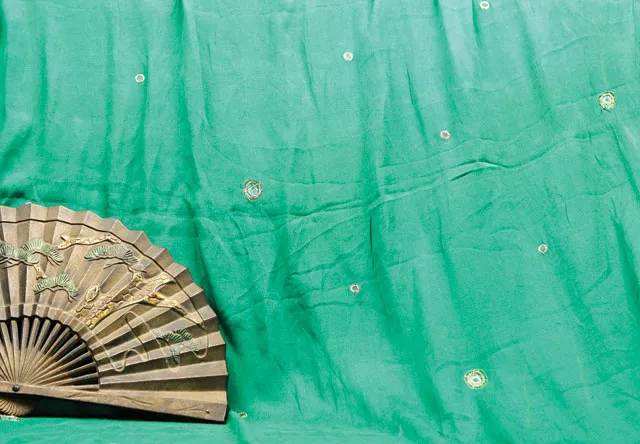I live in a modest, two-bedroom house, which I share with two roommates, two cats, two dogs and a guinea pig. So it goes without saying: We use a lot of air fresheners.
The current weapon of choice is Febreze (in Thai Dragon Fruit). We chose it for the smell, obviously. The ingredients weren’t even an afterthought.
I’m sure other folks who buy odor-masking formulas use the same criteria. The plethora of scented options lacing grocery shelves these days is highly distracting.
But have you ever wondered what it takes to conceal that stink around the garbage can? Are you curious what magical antidotes lurk within your AirWick Freshmatic?
Just flip it over, and you’ll find — not a whole lot.
That’s because the air freshener industry is minimally regulated. Neither the FDA nor the EPA conduct frequent safety checks for toxic chemicals in air freshening products (petitions to change this have been filed). Nor does the government require manufacturers to list the complete concoction of ingredients on consumer labels.
The back of our Febreze can, for example, says, “Ingredients: Odor eliminator, water, fragrance, non-flammable natural propellant, quality controlled ingredients.”
Well, that clears things up.
A study conducted by the Natural Resources Defense Council in 2007 found that 12 out of 14 common household air fresheners (including a range of aerosol sprays, continuous scent-emitting liquids and solids) contain phthalates — hormone-disrupting chemicals known to pose a risk of reproductive abnormalities and birth defects.
“The government has yet to ask in terms of regulating air fresheners,” says Jenny Powers, spokesperson and media director for the Natural Resources Defense Council. “The reason we did the study is because we wanted to get a sense of how pervasive phthalates are in our every day lives.”
The NRDC says there’s no need for mass panic, however.
The issue, says Powers, is the buildup of said chemicals. Toxins like phthalates pose their greatest risk over long-term exposure.
“We’re hoping the government will take a closer look, and do closer examination of these things, considering their prevalence,” she says. “They seem to be popping up everywhere we turn.”
Contrary to their name, air fresheners, for the most part, only mask odors — they don’t actually “freshen” anything. Opening a window does that. And according to SNAP (Spokane Neighborhood Action Partners), some products even contain chemicals designed to numb our sense of smell by deadening the nerves.
If that makes the synthetics sound less appealing by the minute, there’s a bouquet of natural alternatives to consider.
Pure essential oils are great place to start. In addition to providing a galaxy of emotional benefits and enlivening your house with titillating aromas, making your own spray solution is much cheaper.
Jill Enabnit-Stokes, a certified integrative aromatherapist, suggests that consumers check to ensure the Latin name of the oil is written on the bottle. The good oils, she says, always divulge the country of origin somewhere on the label, along with “100 percent pure.”
In terms of disbursement, burning diffusers look pretty when they glow — but don’t provide as many of the psychological benefits. And they pose that nasty risk of starting a fire.
“If you’re buying something that’s 100 percent natural, than you probably don’t want it heated up,” says Stokes. “The hot ones are great for smell, but heat can compromise the integrity of the healing and physical powers.”
Stokes, who even mops her floor with water and lemon essential oil (Pine-Sol, she says, is poisonous to cats), recommends a diffuser that uses water or air to disperse the molecules. Oils should be stored away from sunlight and heat, and their bottles must be closed right after you use them.
Abby McChesney, Natural Living associate at Huckleberry’s, makes her own air freshener out of a carrier oil (usually almond or jojoba), a pure essential oil and water.
“It’s simple and cost effective; I store it in a spray bottle and make my own,” says McChesney. “Heating makes the smell really intense, but it doesn’t really spread it throughout the area.”
You can find a wide assortment of diffusers at Huckleberry’s — water, fan, an aroma stone and even an ultrasonic nebulizer, which releases the oils in timed doses for maximum physical benefits. The battery-powered mini-diffuser is especially nifty, because it can be slipped into a purse or pocket.
If you don’t feel like mixing your own, check out the aromatherapy mist at Huckleberry’s by Aura Cacia ($7.19), or the custom essential oil concoctions (priced individually) like Love Potion (Jasmine, Sandalwood), Creative Juice (Bergamot and Cardamom) or Chill Pill (Lavender, Roman Chamomile).
The options are out there. Why not choose a sniff that will give you a lift?
NOSE THERAPY
There’s a trove of oils to choose from. Certified integrative aromatherapist Jill Enabnit-Stokes lists some of her favorites and their reputed benefits:
Lavender Can decrease nervous tension, stress and anxiety, and helps balance emotions.
Cypress Helps with restlessness.
Sweet Marjoram Can help with mental exhaustion and agitation and is “delicious diffused into a room,” according to Stokes.
Mandarin Helps with irritability and cheers you up. Got a nasty co-worker? Dab a few drops on a cotton ball and hide it somewhere near their desk.
Eucalyptus Can energize and clear the mind.
Peppermint Great for lethargy.
Lemon A natural anti-depressant.
Rosemary Can help with grief and PMS.

